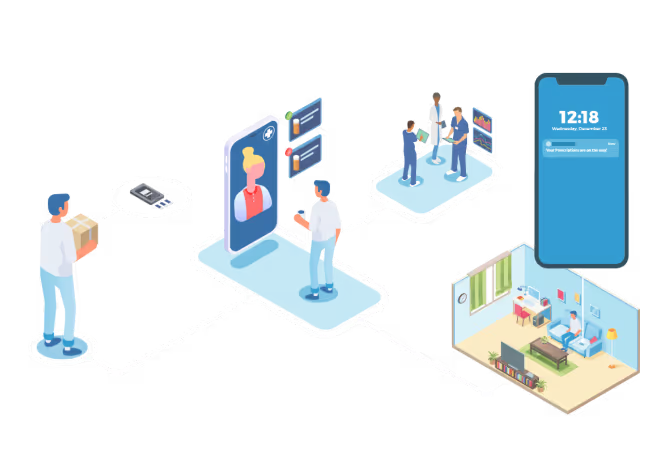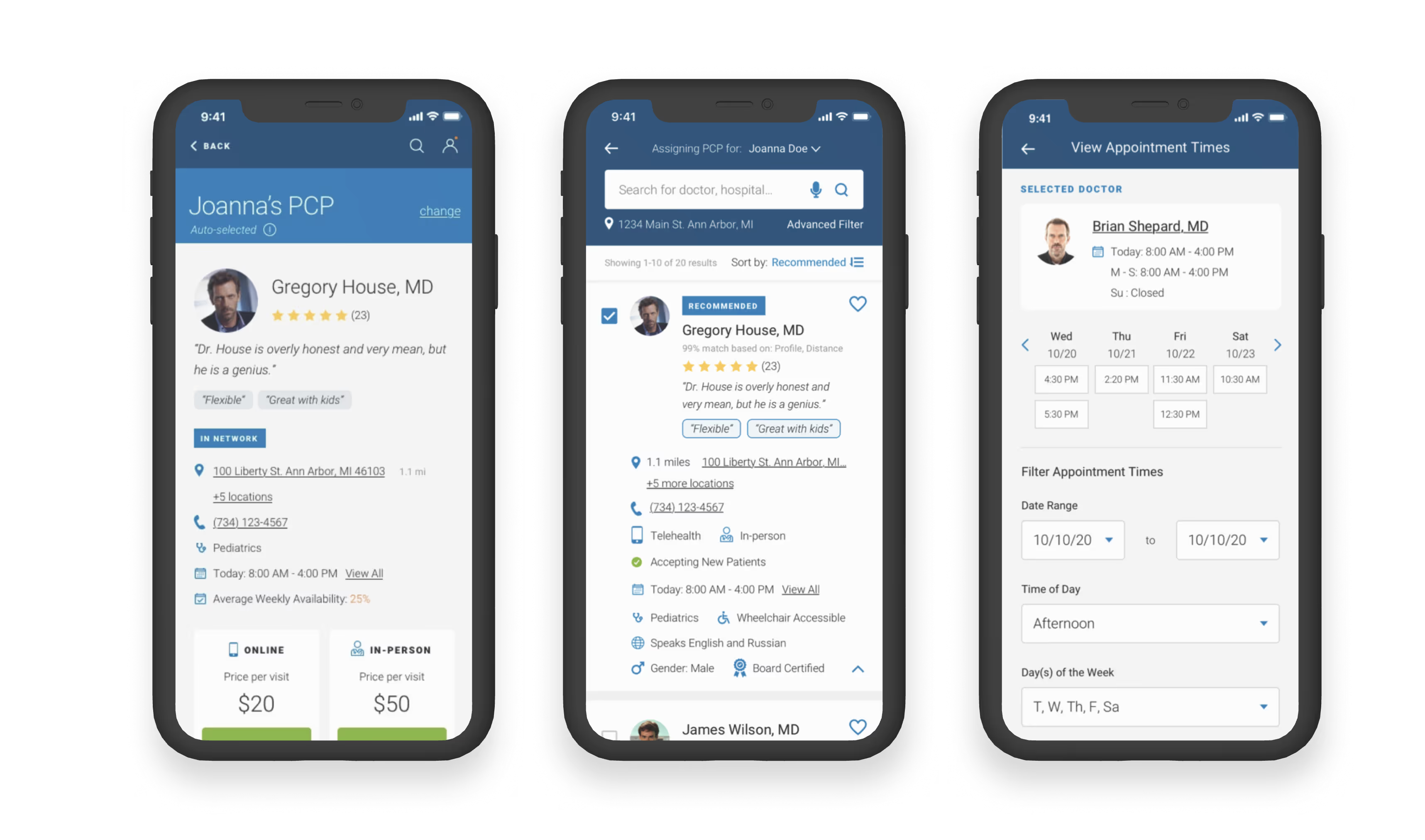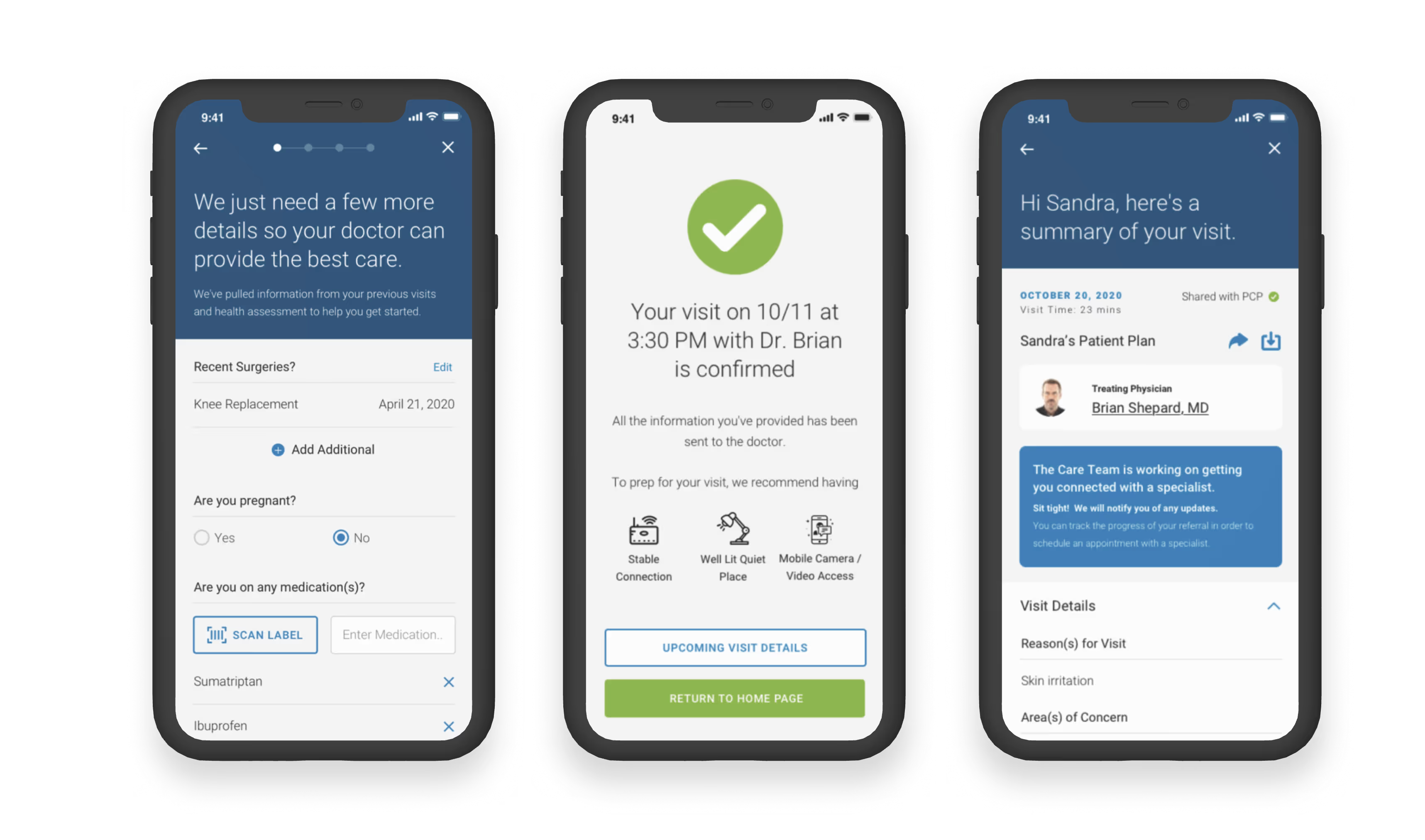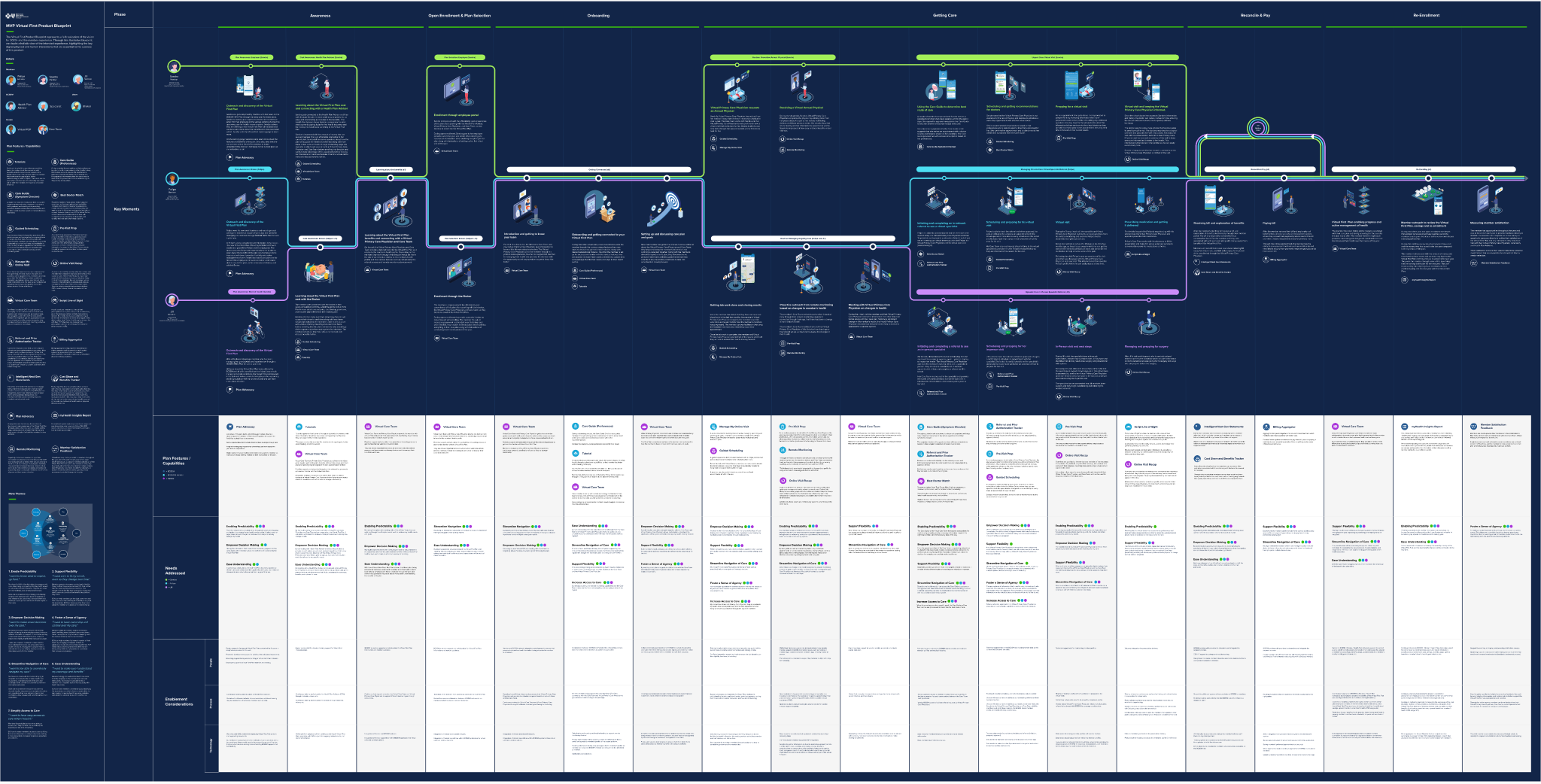
Member satisfaction scores that had previously soared have stagnated in recent years, as cost centers continue to consume the remaining budget, and competition from a smaller but more innovative competitor in Western Michigan intensifies. The newly established Design Studio was assigned to collaborate with Accenture in designing an improved member experience for the BCN HMO.
Our teams were divided into three tracks, and our pod of 4 was specifically tasked with designing and validating the near-term virtual primary care experience. Meanwhile, the other teams focused on the overall member experience and network sculpting. We utilized agile methodology and a human-centered approach to hypothesize, conduct research, and synthesize findings, which we shared with key stakeholders at the conclusion of every sprint.

Our initial round of concepts focused on members' abilities to triage their needs and find appropriate care, as well as their preferences for primary care providers. Our design approach was structured around BCBSM's CX Practices: Easy, Useful, and Personal.
We developed user stories to integrate these moments into a broader narrative and conducted A/B testing with members to evaluate different scenarios.
Based on user research and stakeholder feedback at the end of Sprint 1, we refined our understanding of our objectives and continued to prioritize and expand on the key moments within the experience identified through research. These moments include guided scheduling, online visit preparation, online visit summaries, online visit management, referral management, and prescription tracking.

Members chose the virtual doctor option because it was cheaper, offered visibility into scheduling and greater flexibility compared to traditional providers, and made it easy to schedule an appointment within the app. Due to HMOs' primary care provider requirements, members did not find the virtual limitations on pre-authorizations any more cumbersome than the in-person experience.
Members considered virtual visits over office visits for issues they'd like answers to quickly, and for underlying issues such as common colds, ear infections, and skin irritation, and were more inclined to use online visits when they understood the limitations of the types of care they provided.

These include not only key experiences in a functional prototype, but also guiding principles, a comprehensive service blueprint, a user journey, and recommendations for vendor selection that best match our findings.
This work led to numerous initiatives and projects that have had a lasting impact on the business. Initiatives such as Front Door to Care, where our team continued to explore further how to create future digital triage experiences, as well as Rx Future State Experience, Rewards and Incentives, amongst other important work.
